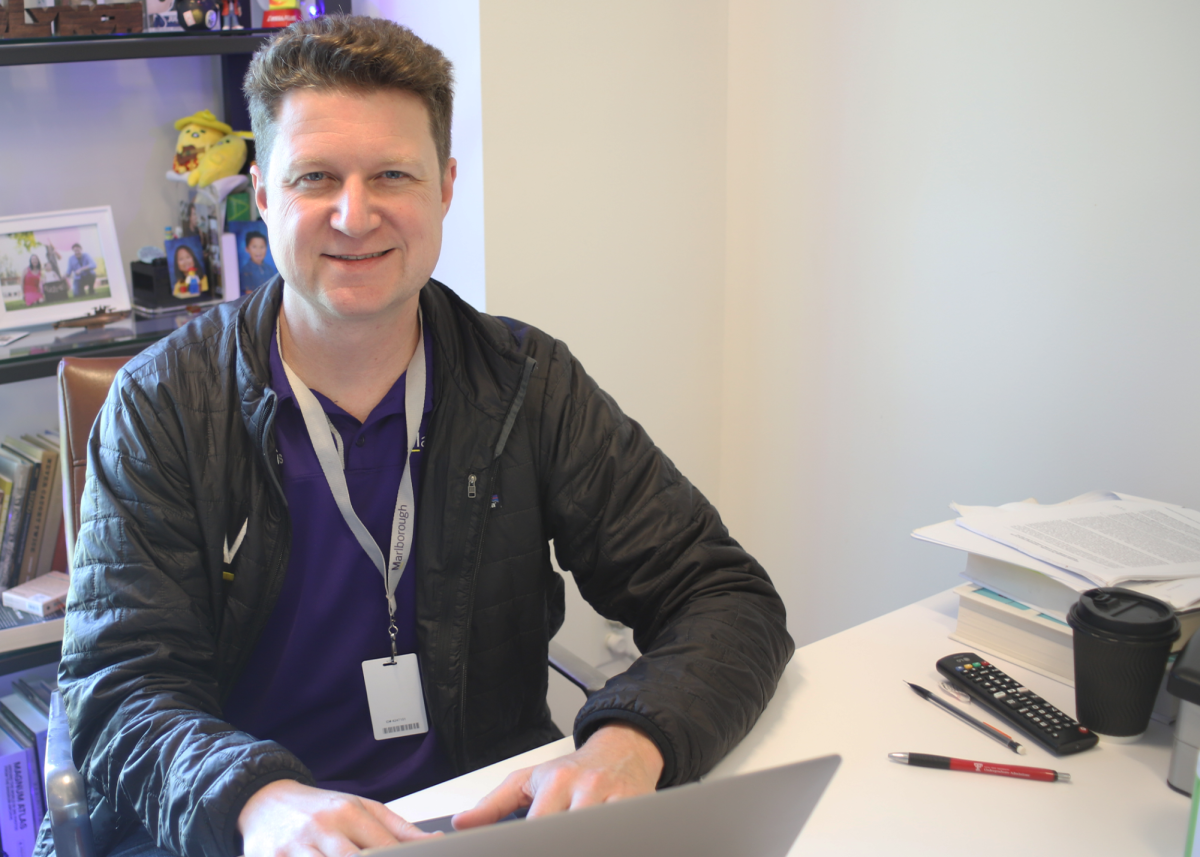
Photo by Chris Colthart
The plan for the $27 million rebuilding of the School’s field, aquatic facility and parking lot incorporates cisterns to collect rainwater, repurposed materials from the old structures and a synthetic field with a water-conserving cooling system that cycles reclaimed water to the cisterns. The School is considering installing a photovoltaic system—a type of solar energy conversion system—to heat the new pool, but that has yet to be determined due to the cost of the tanks and size of the pool; a traditional heating source would be required to supplement the PV tanks to fully heat the expanded pool. The School’s initiative is present in the current construction as well as the final product: practices such as transporting dirt so that none gets wasted on the road are in place. LPA Inc., a company that specializes in sustainable architecture and design, assisted Marlborough in planning and has helped oversee operations along the way.
Marlborough benefits from meeting LEED certification standards in that it can be recognized as a progressive institution in the field of energy and environmental design. The green implementations also serve as a learning opportunity for the Community, according to Director of Finance and Operations Nick Hernandez.
“The cisterns are a good example—at some point I’d love to partner with somebody in the science department to say, ‘You guys should do a study on the cisterns,’ to figure out how much water we’re able to reclaim, how the water’s being used, so on and so forth,” Hernandez said.
The current construction will complete the final phase of the Arden Project that was developed about fifteen years ago. The School got the entitlements to do the construction in the residential area in 1999 but had to wait for the necessary properties on Arden Blvd. to be available for purchase before beginning this final phase, which includes a revamped, two-story aquatic center and a full-sized field. The old abbreviated field and parking lot were completed in the early 2000s as the penultimate phase of the master plan.
Although the Arden Project’s components make considerable environmentally-friendly strides, the School is still limited in what it can install. Neighbors are resistant to high rising structures, and Marlborough’s current buildings provide limited roof space for installations like solar panels.
Not all the money for the Arden Project has been raised, but the School is continuously fundraising ideally to emerge with no debt by the time the construction finishes. The large undertaking, in conjunction with the $65 million Munger Hall project—which is also LEED certified—from several years ago, has required an immense amount of fundraising, so the School will most likely take a break from the period of construction it’s been in for the past decade and a half, according to Hernandez.
Smaller-scale implementations around campus have also contributed to the School’s efforts to decrease its footprint. New bottle-filling water fountains around campus that promote the usage of reusable water bottles, car charges for electric cars in the underground parking garage, electric hand dryers in bathrooms and retrofitted LED lights in certain areas have been installed in the few months.
“We’re saving about 85,000 kilowatts per year, which is great [and] translates into significant savings financially and, of course, environmentally, too,” Facilities Manager Matt Riddle said regarding the new LED lights.
All-School Vice President Olivia ’16, who is the student head of the Campus Environmental Committee, has been researching and advocating to implement the use of recycled paper in printers on campus and Blue Books. Olivia ’16 is also spearheading a program to collect unused printed paper from the ARC printers at the end of each day and distribute them to teachers who want scratch paper.





